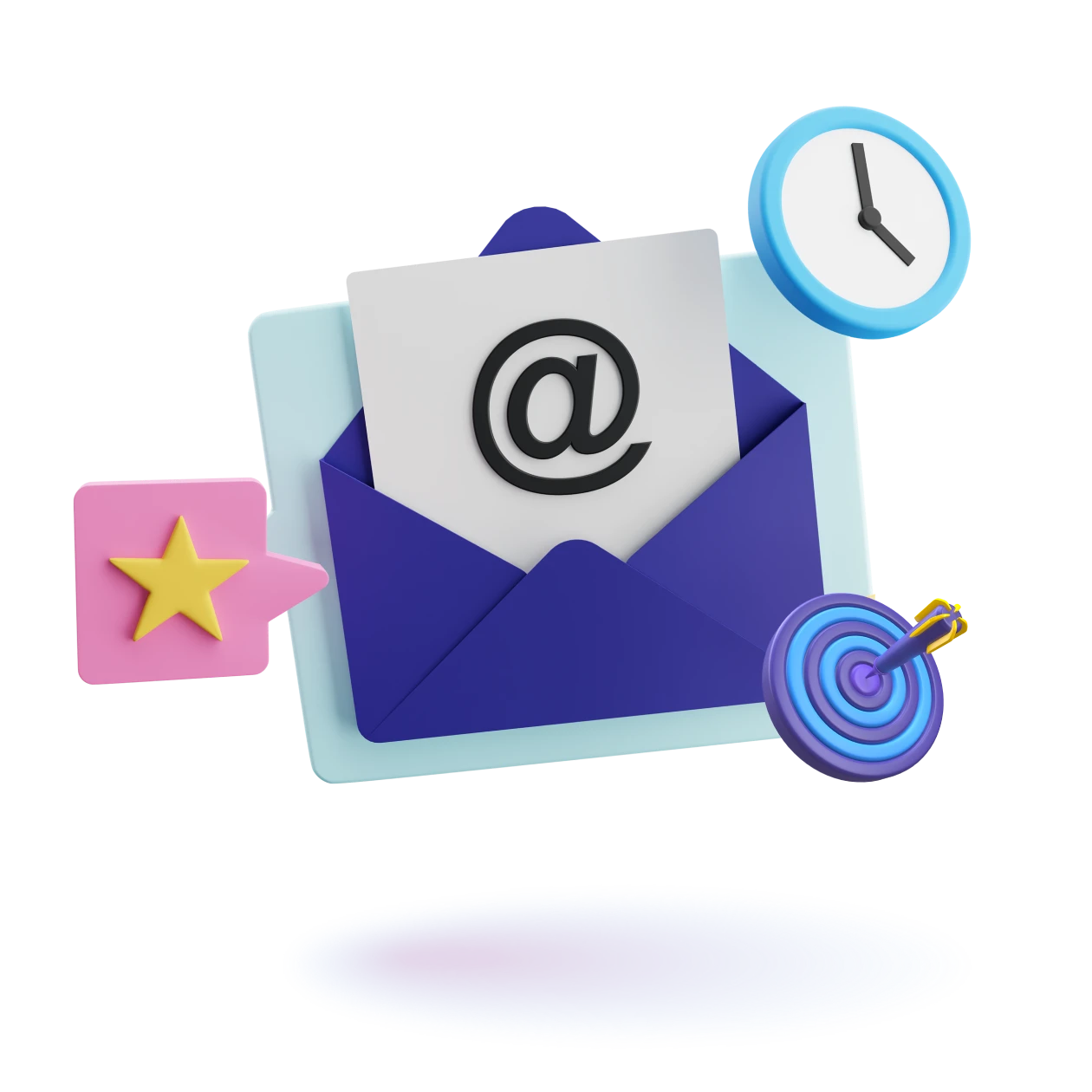I still remember the campaign that changed my thinking about outbound lead generation. My team and I had been running cold email sequences for weeks, but the response rate was embarrassingly low, hovering around 2%. It felt like shouting into the void.
That was when we stumbled upon some of the most effective cold email lead generation hacks, which turned everything around. Instead of blasting generic emails, we used AI to analyze our prospects’ online activity, recent funding rounds, and social media posts. With that data, we crafted ultra-personalized messages. The results? A 23% response rate and five times more booked meetings.
Most cold outreach fails because it’s robotic and impersonal. But AI changes the game. It allows sales teams to automate research, craft hyper-personalized messaging, and optimize follow-ups at scale. Let me explain precisely how cold email lead generation works and how you can use AI to transform your outbound strategy.
- Understanding Your Audience: Why Spray-and-Pray Fails
- Crafting the Perfect Cold Email: The Framework That Works
- Cold Email Hacks for Higher Response: The Winning Cold Email Formula
- Avoiding Spam Filters: The Silent Killer of Cold Email
- Follow-Ups That Work: No, “Just Following Up” Isn’t a Strategy
- Measuring Success: What Metrics Matter?
- Conclusion
Understanding Your Audience: Why Spray-and-Pray Fails
A lot of SDRs think outbound sales are a numbers game. Send more emails and get more replies. It’s simple, right? Except it doesn’t work like that. Mass emails with zero personalization fail to engage, and this is where growth hacking lead generation strategies shine. Open rates drop below 5%. Prospects hit “unsubscribe” faster than you can say “follow-up.”
AI has made gathering deep insights on prospects more effortless than ever, but most sales teams aren’t using this data effectively. Let’s examine this issue.
Define a Hyper-Specific ICP
Broad targeting is a mistake. If your ICP is just “tech companies” or “marketing teams,” you’re already losing. The more specific you get, the better your results. GoodMeetings says businesses with a well-defined ICP experience a 68% higher conversion rate.
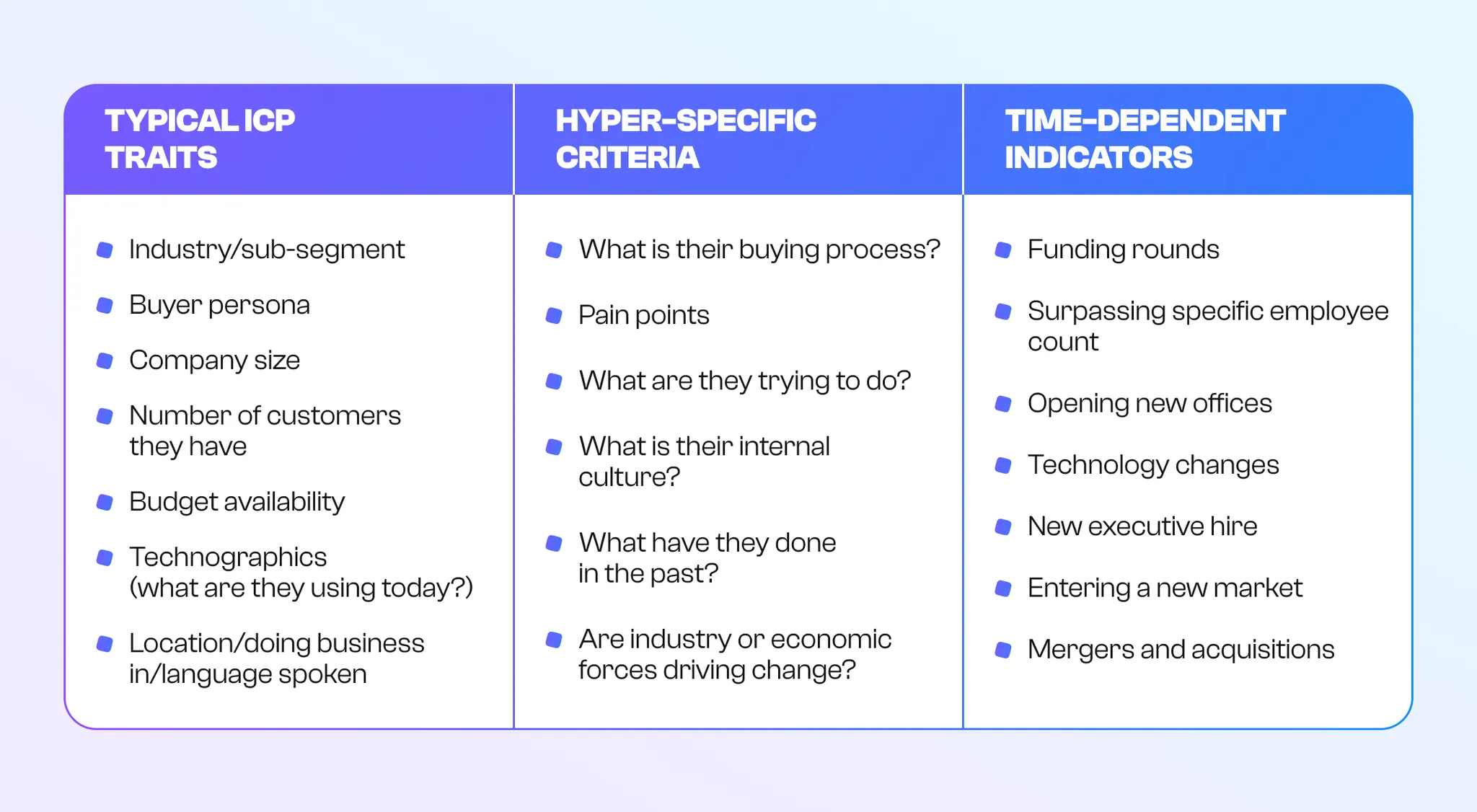
- Identify key industries, company sizes, and pain points.
- Get specific with job titles (e.g., “VP of Demand Gen at Series B SaaS companies”).
- Use AI tools to analyze past customers and find patterns in who converts.
Deep-Dive Research Before Sending Anything
Before hitting “send,” you must know who you’re talking to. AI can help gather insights fast, but strategy matters.
- Their role & responsibilities: what do they care about?
- Company news: recent funding, product launches, hiring trends.
- Shared connections or interests: common ground builds instant trust.
I once mentioned a company’s Series A funding in my email. The prospect replied within an hour, and the response rate for that campaign doubled. Small details make a huge difference.
The biggest mistake in cold outreach is assuming that more emails mean more results. It’s not about volume but relevance.
Crafting the Perfect Cold Email: The Framework That Works
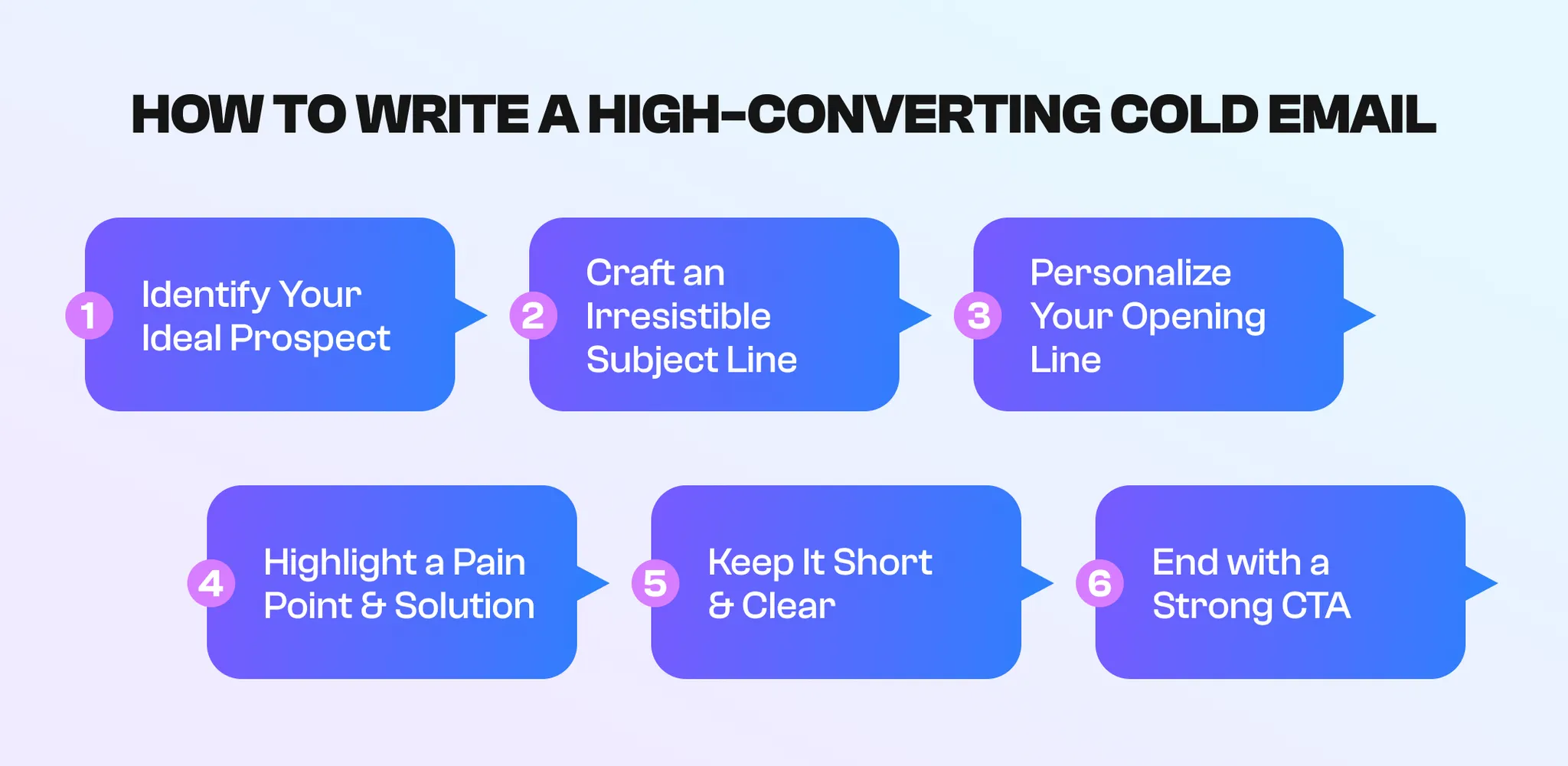
Early in my sales career, my cold emails were a mess. They were too long, too formal, and focused on my product instead of the person reading them. I’d spend hours crafting detailed pitches only to get ignored. My inbox felt like a graveyard of unanswered emails.
Then, I made a simple shift: I shortened my emails, hyper-personalized them, and followed a structured framework. The difference was instant. Open rates jumped, replies started rolling in, and suddenly, booking meetings wasn’t a struggle anymore.
Here’s the framework that took my response rate from 2% to 23%.
Cold Email Hacks for Higher Response: The Winning Cold Email Formula
A great cold email doesn’t waste time. You have about three seconds to capture attention before your prospect deletes it. Every word has to earn its place.
1. Subject Line: 5-7 Words That Spark Curiosity
Your subject line determines whether your email gets opened or ignored. It should be:
- Short (5-7 words)
- Personalized
- Curiosity-driven (but not clickbait)
Examples:
- “Question about [Prospect’s Company]’s growth”
- “Loved your post on [Topic].”
- “Quick idea for [Prospect’s Company]”
What fails:
- “Increase your revenue by 300%” (sounds like spam)
- “Quick chat?” (too generic)
- “Introduction to our services” (no one cares yet)
2. First Line: Prove You Did Your Homework
Most sales emails start with, “I hope you’re doing well.” Delete that. One of the best B2B lead generation hacks is ensuring that every email feels written just for them. Your opening line should show that you know the recipient. Personalization earns attention.
Examples:
- “Saw your company just raised a Series A — congrats! Must be an exciting time.”
- “Noticed you’re hiring for a Sales Ops role, which means growth is a priority right now.”
- “Loved your LinkedIn post on outbound tactics. Especially your point about [specific detail].”
This small touch makes your email feel like a 1:1 message, not a mass blast.
3. Why You’re Reaching Out (2 Sentences Max)
Your prospect doesn’t care about your product yet; they care about their challenges. Keep your pitch short and focused on them.
Bad: “We’re a leading AI-driven platform helping businesses optimize workflows and increase efficiency with cutting-edge automation.”
Good: “I help sales teams at [similar company] increase their cold email reply rates by 3x — without adding extra manual work.”
4. CTA: Make It Easy to Say Yes
A weak CTA kills even the best emails. Avoid vague requests like “Let me know if you’re interested.” Instead, make it effortless to reply.
Examples:
- “Worth a quick chat next Tuesday at 2 PM?”
- “Would it be crazy to set up a 10-minute call this week?”
- “Open to a short intro call? I can send over a few times.”
A specific, low-effort ask makes it easy to say yes.
Why This Framework Works
This approach works because it respects your prospect’s time. It’s short, relevant, and easy to respond to. These lead generation hacks focus on personalization and can significantly increase your chances of success. When I started using this structure, I saw an immediate boost in replies.
Next time you send a cold email, run it through this checklist:
- Is the subject line short and curiosity-driven?
- Does the first line prove you did your research?
- Is the body under 3 sentences and focused on them?
- Is the CTA clear and easy to answer?
Master this, and your inbox won’t stay empty for long.
Our free guide, “How We Successfully Generate Leads for Email Campaigns,” walks you through real-world tactics that have worked for us.
Hack #1: Keep Emails Under 90 Words
Long emails kill cold outreach. The moment a prospect sees a wall of text, they mentally check out. Emails over 100 words see a 50% drop in responses. (Source: Boomerang) One growth hacking lead generation technique we found effective is keeping emails concise and under 90 words.
I learned this the hard way. Early on, I sent detailed introductions — who we were, what we did, and why we were the best— but no one cared. Then, I rewrote my email to be short, direct, and impossible to ignore.
Here’s a real email I sent that booked a VP-level meeting:
Subject: Quick idea for [Prospect’s Company]
Hi [First Name], Saw that [Prospect’s Company] is expanding [mention relevant update]. We recently helped [Similar Company] increase their outbound reply rates by 3x.
Would a quick call this Thursday or Friday be worth it?
Best,
[Your Name]
Hack #2: Use Emotional & Persuasive Copywriting (AIDA, PAS)
Most cold emails fail because they’re dry and robotic. The best ones? They tap into emotion and urgency.
The AIDA framework (Attention, Interest, Desire, Action) helps structure your email to grab attention and drive action. Here’s how:
- Attention: Personal opening line.
- Interest: Relevant pain point or challenge.
- Desire: Show value with proof or results.
- Action: Clear, simple CTA.
Another proven approach is PAS (Problem, Agitate, Solution):
- Problem: “Scaling outbound is tough when response rates are low.”
- Agitate: “Most teams send mass emails that get ignored.”
- Solution: “We helped [Company] boost their replies by 3x — here’s how.”
According to a study by Boomerang, emails between 50-125 words have a 50% higher response rate than longer ones.
Think of your cold email like a movie trailer: Tease the value, but don’t show the whole film. Leave them curious enough to respond. This is one of the B2B lead generation hacks that keeps them wanting more.
Avoiding Spam Filters: The Silent Killer of Cold Email
A few years ago, I ran a campaign that should have been a home run with highly personalized emails, a strong offer, and a well-researched prospect list. But something was wrong. The response rate was abysmally low, and when I checked the data, I found the problem: 20% of my emails were bouncing, and many were going straight to spam.
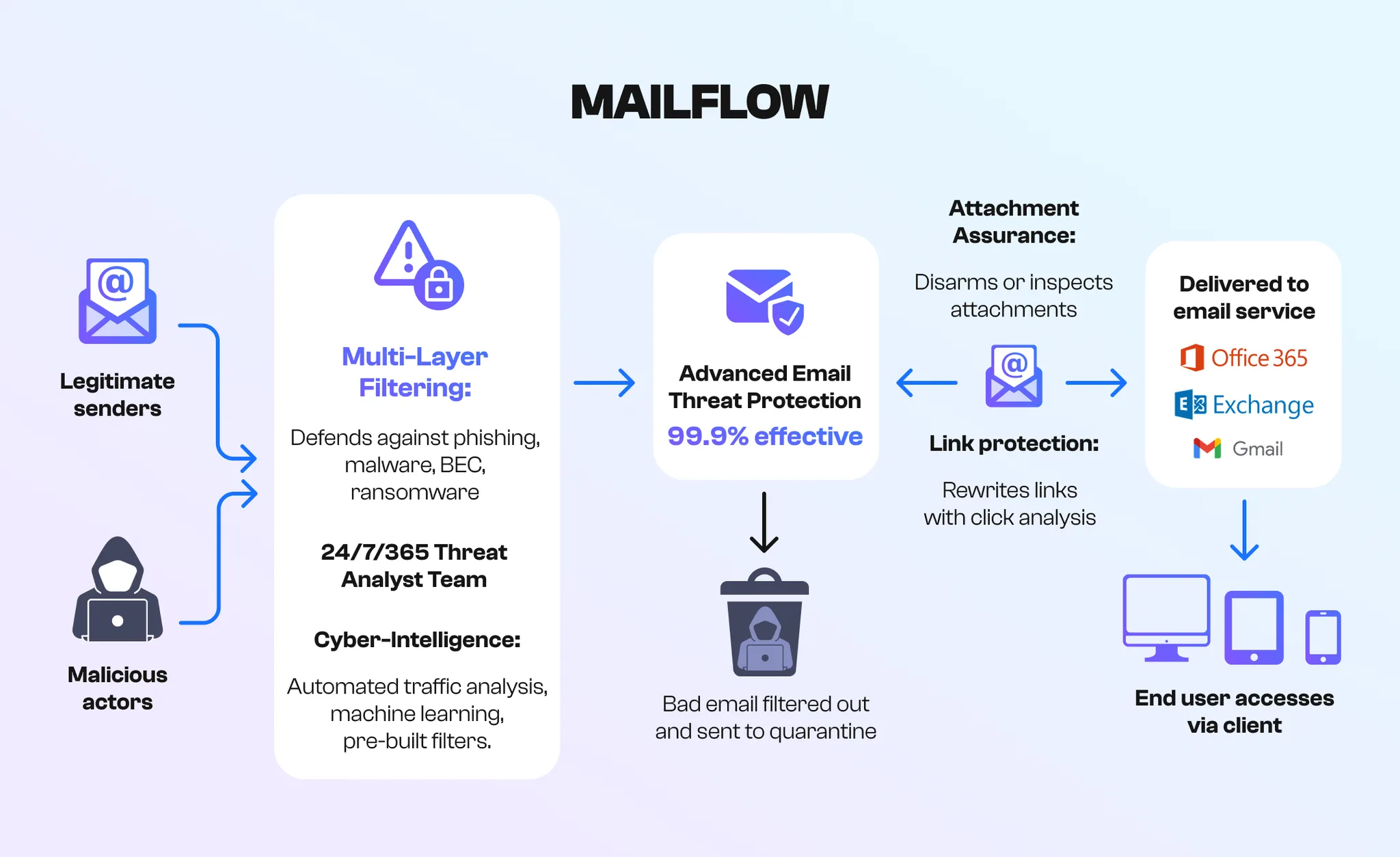
I was losing leads before they even had a chance to read my message. Sound familiar?
One of the crucial B2B lead generation hacks is ensuring your emails bypass spam filters and reach your prospect’s inbox. You can have the perfect outreach strategy, but none of it matters if your emails don’t land in the inbox. Here’s exactly how I fixed it and how you can keep your emails out of spam and in front of your prospects.
Step 1: Set Up SPF, DKIM, and DMARC for Authentication
Email providers are cracking down on unverified senders. Without proper authentication, your emails look suspicious to spam filters. Setting up SPF, DKIM, and DMARC helps prove that you’re a legitimate sender and protects your domain reputation.
- SPF (Sender Policy Framework): Prevents spammers from sending emails on your behalf.
- DKIM (DomainKeys Identified Mail): Adds a digital signature to your emails for verification.
- DMARC (Domain-based Message Authentication, Reporting & Conformance): Tells email providers what to do if SPF or DKIM fail.
Work with your IT team or email provider to configure these records in your DNS settings. Tools like MxToolbox can check if your authentication is properly set up.
Step 2: Warm Up Your Email Before Sending Cold Outreach
If you start sending hundreds of emails from a new domain, you’ll get flagged as a spammer. Email providers monitor new senders, and sudden spikes in activity destroy your sender’s reputation.
How to warm up your email properly:
- Start with 10-20 emails per day, then gradually increase.
- Use an email warm-up tool like Lemwarm or Mailreach to simulate real engagement.
- Ensure at least 50%+ open rates before scaling up.
What happened when I skipped this? My emails landed in spam; it took weeks to recover my sender’s reputation. Lesson learned: Always warm up your domain first.
Step 3: Avoid Attachments & Spam Trigger Words
Spam filters scan emails for red flags like attachments, excessive links, and certain trigger words.
What NOT to do:
- Don’t use words like “free,” “guaranteed,” “act now,” or “limited-time offer” — they scream spam.
- Avoid attachments in cold emails. Instead, wait until the prospect expresses interest, and only then share a link or attachment.
What works:
- Keep language natural and conversational.
- Use a custom tracking domain if using links.
- Focus on personalization instead of gimmicks.
Fixing my spam issues reduced my bounce rate from 20% to under 2%, and my response rate shot up. If your emails aren’t reaching inboxes, you lose leads before the conversation starts. Set up authentication, warm up your domain, and avoid spammy tactics. When your emails are seen, your outbound results will change overnight.
Hack #3: Use a Dedicated Outreach Domain
Early on, one of my biggest mistakes was sending cold emails from my company’s main domain. At first, everything seemed fine until open rates started dropping, replies dried up, and our domain reputation took a hit.
It turns out that 20% of cold emails never reach inboxes due to poor sender reputations (SuperOffice). Once your main domain is flagged, it’s a nightmare to fix. This is why using a dedicated outreach domain is one of the most important cold email lead generation hacks to avoid deliverability issues.
Cold outreach involves high-volume sending, which increases the risk of spam complaints, bounces, and unsubscribes. If this happens on your main domain, your entire company’s email deliverability suffers.
Setting up a separate domain (e.g., get[company].com instead of company.com) keeps your primary domain protected from blacklisting while still allowing you to run outbound campaigns.
- Register a domain that looks closely related to your main one. (Example: if your company is Acme.com, use AcmeSales.com or GetAcme.com.)
- Authenticate it with SPF, DKIM, and DMARC (critical for inbox placement).
- Warm it up before launching large campaigns.
Follow-Ups That Work: No, “Just Following Up” Isn’t a Strategy
Early in my sales career, my follow-ups looked like this:
- Email 1: No response.
- Email 2: “Just following up on my last email.” No response.
- Email 3: “Wanted to check if you saw my previous emails.” No response.
By Email #4, I felt I was sending messages into the void. The problem? My follow-ups added zero new value. Following up with growth hacking lead generation strategies helps you maintain momentum and increase the chances of getting a response.
When I changed my approach — offering fresh insights instead of passive nudges — my reply rate jumped, and I started booking more meetings.
Most deals happen during the follow-up. Following up at least five times can increase replies by 70% if done right.
Follow Up With a New Angle Every Time
A good follow-up isn’t a nagging reminder; it’s another chance to capture your prospect’s attention. Each email should bring something new to the table. Here’s a follow-up sequence that works:
Follow-Up #1: Restate the Value in a New Way
Example: “Hey [First Name], I know [pain point] is a challenge for [Company]. We recently helped [Similar Company] improve [specific result]. Let me know if it’s worth a quick chat!”
Why it works: Sometimes prospects miss your first email. This follow-up reinforces your value without repeating the same message.
Follow-Up #2: Share a Relevant Case Study or Insight
Example: “Hey [First Name], thought you might find this interesting — [Company] tackled [pain point] and saw [specific result]. Let me know if you’d like to see how this could work for you!”
Why it works: Real-world proof builds credibility and makes it easier for prospects to say yes.
Follow-Up #3: Light Humor or a Creative Approach
Example: “Not sure if my last emails got lost in the inbox abyss or if I should take the hint and stop trying to impress you! Either way, I’m happy to connect if it makes sense.”
Why it works: Humor humanizes you. It also breaks up the monotony of dry sales emails.
Follow-Up #4: A Quick, Friendly Bump
Example: “Hey [First Name], I wanted to bring this back to the top of your inbox. Let me know if this is still relevant!”
Why it works: Simple, polite, and keeps the conversation open without pressure.
Follow-Up #5: The Breakup Email
Example: “Looks like this isn’t the right time, and that’s totally fine! I’ll step back for now, but feel free to reach out if things change. Wishing you all the best!”
Why it works: It removes pressure and sometimes prompts a response from prospects who just got busy.
Most deals don’t happen in the first email; they happen in the follow-up. But sending the same “Just checking in” message won’t get you there. Every follow-up should add value, spark curiosity, or make your prospect smile. Test this approach, track your responses, and watch your booked meetings increase.
Measuring Success: What Metrics Matter?
High open rates don’t mean prospects are interested. Even reply rates can be misleading if those replies aren’t turning into actual meetings: the best outbound teams track outcomes, not just activity. Focusing on meaningful metrics is one of the most critical B2B lead generation hacks you can apply to optimize your cold email strategy.
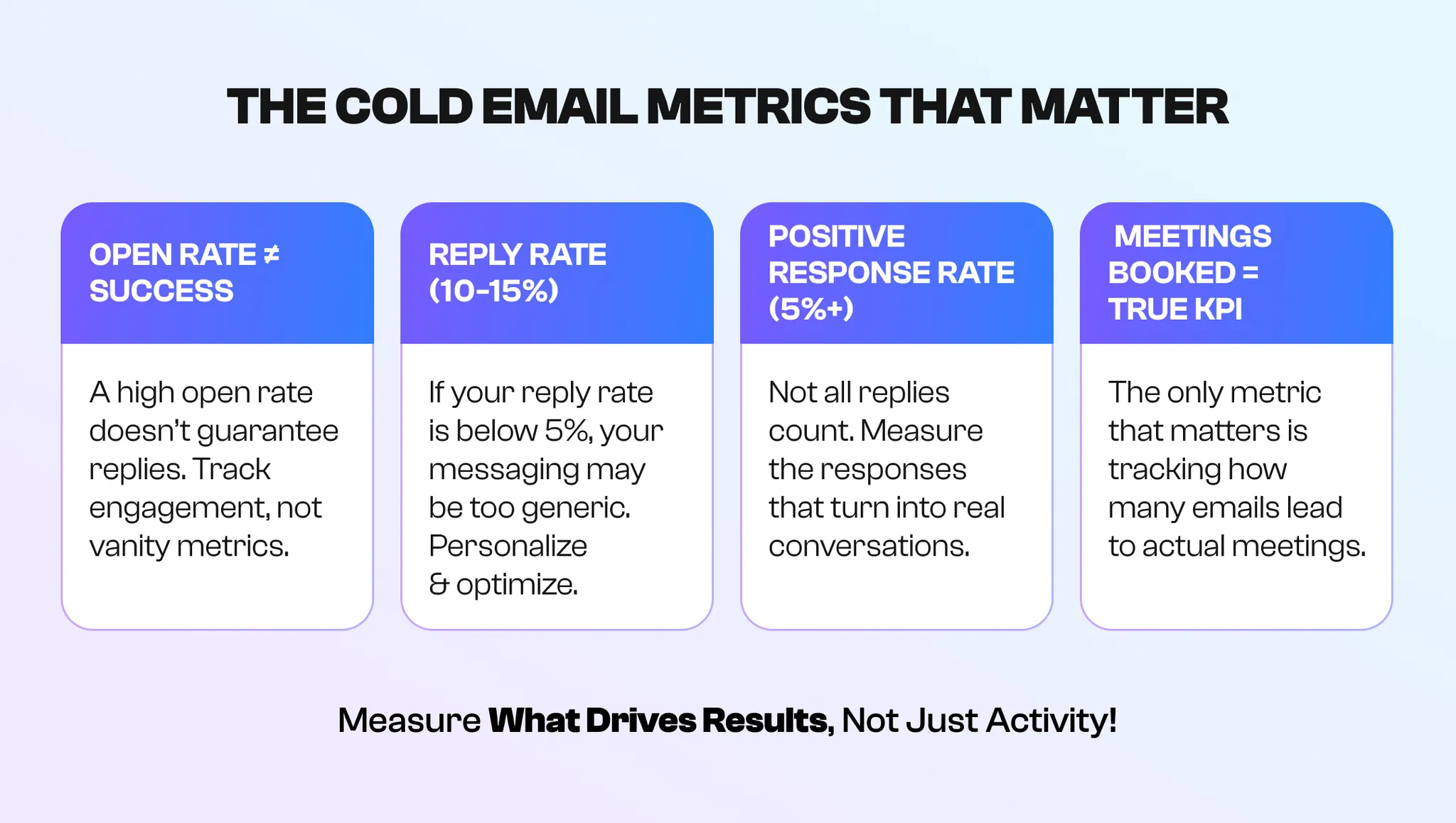
Here’s how to measure what moves the needle.
Hack #5: Stop Tracking Vanity Metrics, Focus on Outcomes
Instead of chasing numbers that look good on a dashboard, focus on these three key KPIs:
Reply Rate (Aim for 10-15%)
A healthy reply rate means your emails get engagement, not just opens. If you’re below 5%, your messaging might be too generic or irrelevant. Personalize better, test different opening lines, and ensure your value prop is crystal clear.
Positive Response Rate (At Least 5%)
Not all replies are good replies. A prospect saying, “Not interested” doesn’t count. Track the percentage of replies that lead to a meaningful conversation. If you’re getting replies but no meetings, refine your CTA. Make it low-effort and specific (e.g., “Would a quick chat on Thursday at 2 PM work?”).
Meetings Booked (The Ultimate Success Metric)
This is the only metric that truly matters. Salesloft’s “Big Book of Sales Cadences” reports that call-to-connect conversion rates range from 15% to 38%. Your follow-up game needs work if prospects express interest but don’t commit to a meeting. Make it easy for them by suggesting times and sending a calendar link.
If you’re only looking at open rates, you’re flying blind. Track replies, positive responses, and meetings booked, and optimize based on what’s working. The best outbound teams don’t guess. They measure, adjust, and scale what works. Are you tracking the right metrics?
Conclusion
If there’s one thing I’ve learned about cold outreach, it’s about sending more thoughtful emails. My response rates skyrocketed when I stopped blasting generic emails and started focusing on research, personalization, and strategic follow-ups. Yours will, too.
Cold emailing isn’t dead — it’s just misunderstood. Get it right, and your inbox will never be empty again. To master cold email lead generation hacks, focus on personalization, strategic follow-ups, and using data to optimize your outreach.
Ready to optimize your cold email outreach? Let’s discuss your challenges and build a strategy together. Book a call with us today! Your next high-value meeting is just one great email away.
We handle appointment setting with qualified B2B leads — you stay focused on growing revenue.

